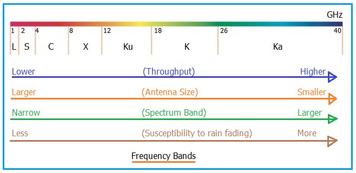
Diplexer vs. Duplexer: Key Differences and Applications Explained
Explore the differences between diplexers and duplexers in RF communication systems, including their functionality, structure, and applications.
Showing 20 posts (Page 2 of 6)
Advertisement

Explore the differences between diplexers and duplexers in RF communication systems, including their functionality, structure, and applications.
Learn about Doppler resolution in radar systems, its formula, and how it enables radars to differentiate between targets moving at different velocities.

Learn about DTMF (Dual Tone Multi Frequency) signal frequencies and their corresponding codes used in telecommunication networks. Understand the row and column representation of tones.

Convert between electrical length in degrees and meters using this handy calculator. Examples provided for easy use.

Explore the differences between flat fading and frequency selective fading in wireless communication, including bandwidth, delay spread, and frequency spectrum effects.

Convert between frequency and wavelength using our online converter. Calculate wavelength from frequency or frequency from wavelength.

Explore the concepts of frequency and phase in waveforms, their relationship, and methods for measuring frequency offset in both frequency and time domains.

Convert GSM ARFCN (Absolute Radio Frequency Channel Number) to its corresponding uplink and downlink frequencies in MHz. Simplifies RF frequency planning and maintenance.
Convert GSM ARFCN values to corresponding uplink and downlink frequencies using our calculator. Understand the ARFCN to frequency relationship across GSM bands.

Explore GSM RF planning, including BCCH frequency allocation, GSM bands, ARFCN, and frequency reuse strategies for optimal network performance.
A breakdown of GSM900, DCS1800, and PCS1900, comparing frequencies, channel numbers, and providing the formulas for each band.

Calculate inductive and capacitive reactance (XL, XC) based on frequency, inductance, and capacitance values. Includes formulas and examples.
Explore the distinctions between Infrared (IR) and Ultraviolet (UV) radiation, including frequency, wavelength, advantages, and disadvantages for various applications.

Calculate intermediate frequency (IF) with our calculator and learn about its formula, definition, and benefits in RF transceivers and heterodyne architectures.

Explore the infrared (IR) spectrum, its subdivisions, and a frequency table for infrared communication, covering wavelengths and applications.

Explore the Iridium satellite system, including its features, constellation details, operating frequencies, and its use in providing global communication via satellite phones.
Explore the essential ISM frequency bands and their center frequencies for industrial, scientific, and medical applications. A concise reference table included.

Explore K band frequency characteristics, advantages like balanced throughput and antenna size, and applications in radar, satellite, and astronomy.

Explore Ka band frequencies (27-40 GHz), advantages like high-speed data, and applications in satellite communication, radar, and space telescopes.
This article compares Ku-band and C-band VSAT systems, outlining their frequencies, benefits, and drawbacks for satellite communication.
Advertisement